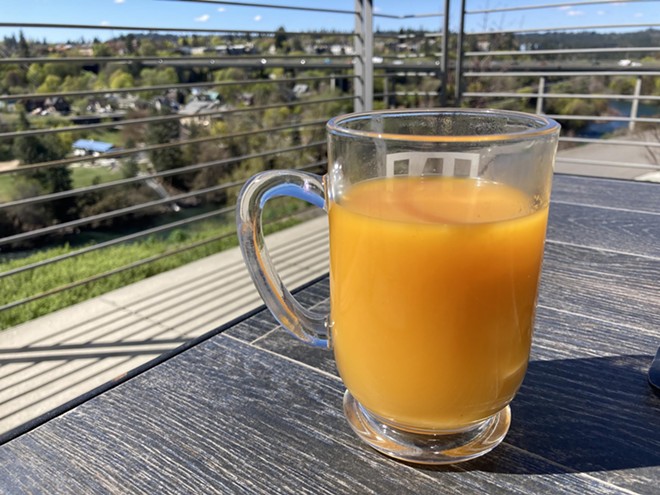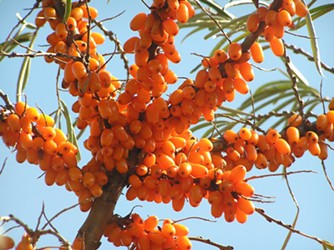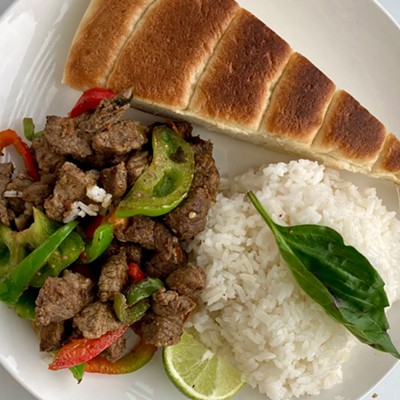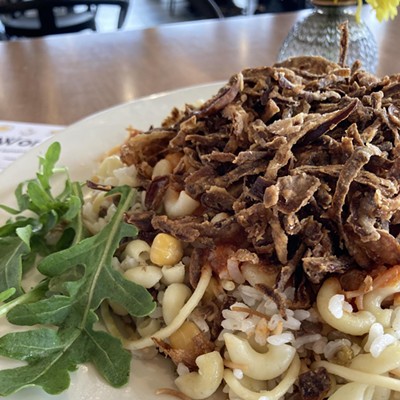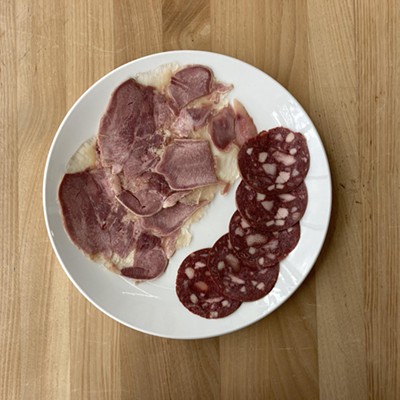Around the World in 80 Plates: Sea Buckthorn from the East Himalayas
[
{
"name": "Broadstreet - Instory",
"component": "25846487",
"insertPoint": "4",
"requiredCountToDisplay": "4"
},{
"name": "Broadstreet - Empower Local",
"component": "27852456",
"insertPoint": "8",
"requiredCountToDisplay": "8"
},{
"name": "Broadstreet - Instory",
"component": "25846487",
"insertPoint": "12",
"requiredCountToDisplay": "12"
},{
"name": "Broadstreet - Instory - 728x90 / 970x250",
"component": "27852677",
"insertPoint": "18",
"requiredCountToDisplay": "18"
},{
"name": "Broadstreet - Instory",
"component": "25846487",
"insertPoint": "5th",
"startingPoint": "23",
"requiredCountToDisplay": "24",
"maxInsertions": 100
}
]
This is an installment of the Inlander's yearlong project "Around the World in 80 Plates," a quest to find 80 foods and drinks in the Spokane area representing 80 different places. Read the introduction to the project here.
Count of dishes/places: 29
When Igor Anisimov talks about drinking sea buckthorn tea, he describes cheap cups of the hot, bright drink in Crimea, a valuable peninsula and autonomous region of Ukraine that was illegally annexed by Russia in 2014.
Not that the drink is exclusive to Crimea — it's popular across the cold, dry parts of eastern Europe and northern Asia, especially Mongolia, China, Tibet and Russia. But for Anisimov, it's a drink that's inextricably linked with home.
The owner of Cedar Coffee on North Monroe is a Ukrainian immigrant who fled warfare in his homeland in 2015. Today, Anisimov's coffee shop is filled with typical American cafe fare — lattes, Americanos, drip and decaf. His selection of black, green and herbal teas is broader than most, but still recognizable. He's also famous for his homemade chai, inspired by South Asia. But at the bottom left of the menu, sea buckthorn tea reminds guests that this is truly a Eurasian cafe.
Sea buckthorn, also known as Siberian pineapple, sand thorn, sea berry and sallow thorn, is a shrub with shockingly orange berries. The bright fruit is jam packed with vitamins C, A, E and K and has long been an important part of folk medicine in its native regions, dating back at least to Tibetan medical books from the sixth century.
Traditionally, every part of the plant was used, from the roots and bark to the leaves and fruit. The flesh of the fruit contains fatty oils, just like olives or avocados, that can be pressed into a highly sought-after oil for cosmetics. Some researchers in the 1940s went so far as to suggest that Russian astronauts eat it and use sea buckthorn creams to protect their skin against cosmic radiation.
Anisimov makes no claims about sea buckthorn's bioactivity or therapeutic effects. He does, however, think you'll like how it tastes. The berry itself is quite sour, something like a kumquat, but when he combines it with sugar, cinnamon and star anise, it becomes the perfect trifecta of sweet, sunny, and spiced.
Anisimov steeps the berries to extract the flavor without losing too many vitamins or the rest of the good stuff. Since there's no juicer involved, he considers it a tea, even though it's creamier than water and opaque with tiny flecks of pulp. He prefers it hot, which adds an extra layer of coziness, but also because he always prefers hot drinks, even in the summer. But he will serve it to you over ice if you ask really, really nicely.
Sea buckthorn tea packs such a powerful punch of antioxidants that Anisimov doesn't recommend any more than 12 ounces. But it'll cost you — even though the stuff is common and inexpensive in Ukraine and Russia, importing sea buckthorn berries into the U.S. is costly, and one cup is $7 at Cedar.
The flavor alone, though, is worth it. And if you're actually drinking an anti-cancer, anti-inflammatory, anti-microbial, antiviral, neuroprotective superfood that can potentially fight ovarian tumors, you're probably actually saving money. #girlmath
But for Anisimov, the best part of sea buckthorn tea has to be that the flavors of home are now a part of his new home, Spokane. The bright orange jug in his fridge is a reminder that sour and sweet are often poured out together, that the thorns in our side often don't leave us, but can sometimes lead us to unexpected healing. ♦
Have an idea for what I should eat next? Wanna make me a traditional dish or drink from your hometown? Send 80 Plates tips and ideas to [email protected].

